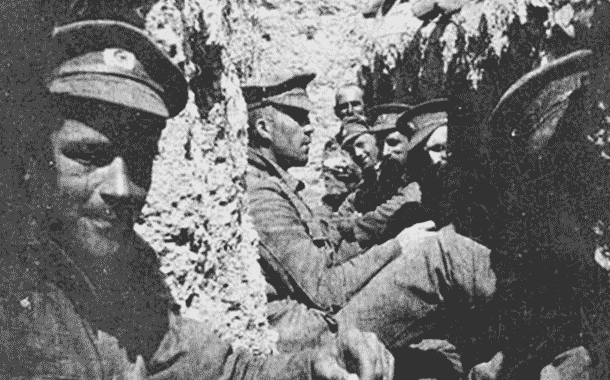<![CDATA[The 'Barbed Wire' Island was a marshy area in the Thames Estuary fortified and loaded with guns to welcome the German invasion. The invasion never came, but archaeologists have managed to find something extremely exciting in their excavations on the Island of Sheppey, located off the coast of North Kent. The archaeologists were expecting to uncover structures from World War Two, but instead found amazing trenches that date all the way back to World War One. This trench network is just one aspect of the operation that tried to enhance the security of the islands inhabitants during the war. All residents were issued Sheppey passports, and there were plans to evacuate the entire Kent community if an invasion came. The island is known to have been a major dockyard since the seventeenth century and covers an area of thirty five miles. It has a population of over forty thousand people according to the 2011 Census, and is separated from the mainland by a narrow sea channel known as 'the Swale.' During the First World War, the Germans were expected to come from the North Sea to invade Kent, because the military posts of Chatham and Sheerness were believed to be prime tactical targets. As a result, a defensive network of double or triple line trenches was constructed on the island of Sheppey and on the Kentish mainland as well. These defences were quite similar to those found in mainland Europe, according to Simon Mason, the principal archaeological officer of Kent County Council. Mason mentioned that the trench systems of the Western Front were replicated in this area to enhance security for the residents. Reports also suggest that the defensive structures were built as a part of the scorched earth policy, which would make the locals burn down the towns of Faversham and Sittingbourne, if a German invasion ever came. The Council also revealed details about the exact evacuation routes that had been set. Mason mentioned that the main idea was to try and relocate people away from the coastline, to an area south of Maidstone. This would take them away from the frontline, to be replaced with the military. The whole aim of the scorched earth policy was to ensure that the German army could never live off the land. It is being said that the island and its dockyards were so important the entire area was converted into a restricted zone, and only residents with "Sheppey passports" were allowed to enter. What makes the north Kent trenches so special is that they are believed to be the only trenches in England that were built for defensive purposes and not for training. Mason mentioned that the archaeologists had actually found a set of fantastic First World War remains, something which no one knew about beforehand. He also mentioned that the amazing way in which these arrangements had been made was often overlooked by people, even by experts. ]]>
Sheppey WW1 Trenches Discovered by Kent Archaeologists
